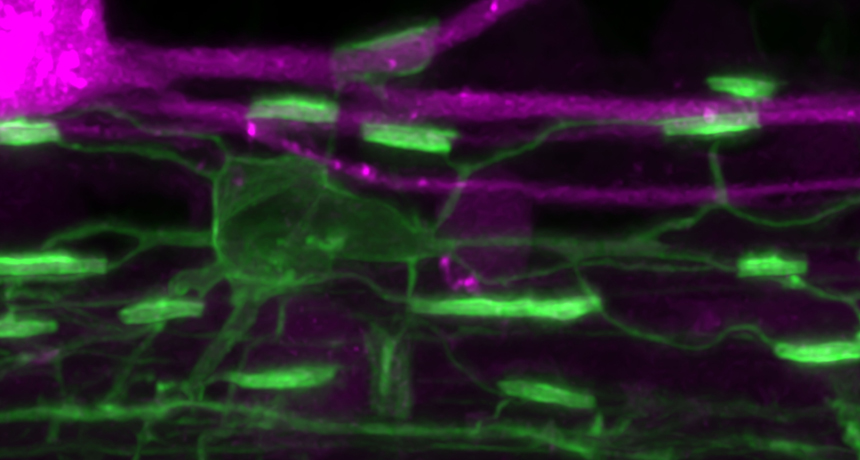Brain cell insulators are short-timers
Limited myelin production time may make it harder to repair nerve casings damaged by multiple sclerosis

SHORT-TIMER CELLS Cells called oligodendrocytes (shown in green) only spend five hours insulating nerve fibers (purple) with a waxy coating of myelin in the zebrafish central nervous system.
T. Czopka et al/Developmental Cell 2013






